October 14th, 2024




An emotional, disarming Western Canadian Goon Squad. Loved it.
by Hillary Chute
Interesting book of essay discussing Maus and it’s impact. The interview transcript near the end was free-wheeling and illuminating.









by David Heinemeier Hansson and Jason Fried
Marginally better than I expected.




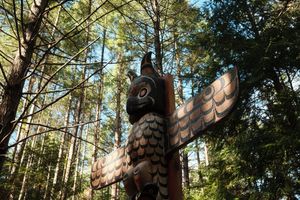









by Art Spiegelman


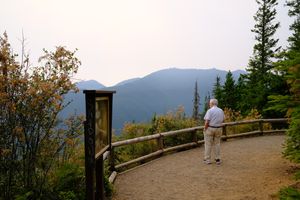




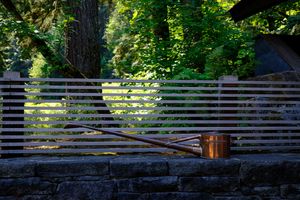










A concise evaluation of how the use of LLMs is transforming business and education, disrupting existing processes and systems.
Nothing groundbreaking but a helpful reminder of ways to tend to creativity, in all it’s forms.



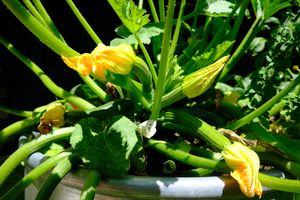



Comedy is made up of three notes: construct, confirm and confound.
It’s fun to read about a place while you’re visiting. I wonder what it would take to write a humour book like this.
not knowing where to start has never stopped me






I was surprisingly moved by this graphic novel. A charming, earnest interchange of craft, patiently recounted with humour and grace.
If there’s one thing I love
It’s an infinite resource
If there’s one thing worth loving
It’s a surplus of supplies
Hostages – The Mountain Goats (Bleed Out)
What I really love is to not use something to its full capacity
Not full power
Half its potential
Medium
Stumpwork – Dry Cleaning (Stumpwork)













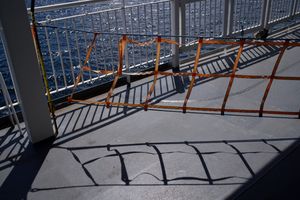




























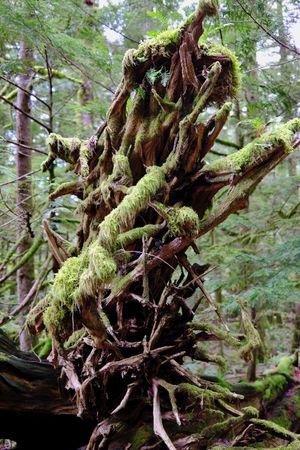


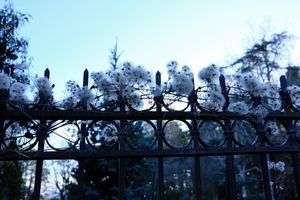




by Margaret Wise Brown




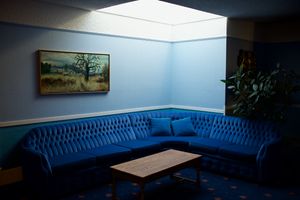




“You know how the cord on the vacuum has that strip of red tape at the end, to tell you when it’s out? But before you make it to the red part, there’s some yellow tape, too, right? What are they trying to say? Don’t you think the red one is enough?”

by Cormac McCarthy
by Ken Blanchard and Spencer Johnson


Halfway through “Novelist as a Vocation,” I realized how much a Murakami fan I’ve become. Not that I’ve read all his books, mind, but I’ve devoured most of them, gained a sense of his psyche, improved my understanding of the translation process that’s so intrinsic to my enjoyment of his work, and warmed by his clarifying preamble in a short story collection.
At the beginning of this book, Murakami warns that the written word therein is reminiscent of the content delivered at a lecture opposed to a fully-realized book. This is one of the book’s strengths. There’s no stench of cynically polished productivity advice, it’s one (famous, inspiring) author’s take on his writing process, how his life has been impacted by his approach and how the world has swirled and reacted to that in the past 50 years.
The book was a delightfully lucid read. The author’s heart and craft is captured in off-the-cuff musings, made notable by his self-awareness when he repeats himself for the sake of it or when he delivers tangential rants about nuclear power and Japanese domestic policy.
On particular passage will stay with me. In a later chapter, Murakami delivers his thoughts on motivation and personal drive for satisfaction. His plain, succinct language is disarming as he delivers.
Still, not grasping what it all means, I persist in my daily running routine. Thirty years is a long time. To continue one habit that long requires a great deal of effort. How have I been able to do it? It’s because I feel like the act of running represents, concretely and succinctly, some of the things I have to do in this life.
I love the inevitability of this. The cold reasoning behind it. Committing yourself to something – not because it’s a noble thing to do – but because you’ve decided that it is something you have to do in this life.
by Ken Roueche
This was so strange and unsettling.
I picked up this book as I wanted to learn more about Moresby Island and didn’t realise there are (at least) two Moresby Islands in BC. There’s a private island near Sidney off the Saanich Peninsula – 1.2 miles wide with an estimated population of two people and cattle.
This book isn’t about Moresby Island, it’s about South Moresby, the second largest of the Haida Gwaii Islands that was made into a Canadian National Park in 1988. But really, this book isn’t even about South Moresby, it’s about Gwaii Haanas, the traditional home of the Haida people.
Paradise Won is written by Elizabeth May, well known for her time as the leader of the Green Party of Canada. The book recounts her days as a Senior Advisor to the Environment Minister and documents in meticulous detail the steps, triumphs and setbacks of creating a new National Park in Canada.
As a new Canadian, the book weaved together a number of cultural strings that had previously been separate. It helped me to understand Governmental history, the interplay between the provinces and agencies, and Elizabeth May’s advocacy for environmental issues. It was also a sad reminder of the bureaucratic nightmare First Nations people find themselves in under the Canadian government. In one notable passage, 30,000 books are pulped because they included photo captions as the history they communicated was seen as verboten by government officials.
There was a reasonable amount of representation for the Haida people in the book but I couldn’t help notice a bifurcation between the government bods and friends and those living in the places in question. May herself didn’t set foot in Haida Gwaii until the Park agreement was all but inked. While the achievement was remarkable and a testament to their hard work, the fizzy celebrations and pats on the back sit in stark contrast to the further years of negotiations and even threats to other assets including mineral rights.
One thing I did appreciate was the blow-by-blow account of the negotiation between the BC provincial and Federal governments. I hadn’t seen a large negotiation like this spelled out, and it was interesting to reverse engineer the tactics taken by each side to get what they wanted.
In The Emissary by Yoko Tawada, words are disappearing. In the Memory Police, by Yōko Ogawa, it’s time for everything else to disappear.
It’s a considerate book that spells things out in a precise, laborious fashion. There’s a nightmarish book-in-the-book with a horror tone that plainly reflects the main story.
I’m intrigued by the enigmatic choices made, in particular: why are two of the main characters only ever referred to as “The Old Man” and “R”? The book didn’t capture my imagination otherwise.
generally thought to be or to exist, even if this may not really be true
A common theme for me is to start a book like this, get enthralled by the world building and characters and then start a slow, steady descent into disinterest. Towards the end I found it hard to care about the endless stream of creative names for people and places – nevermind tell them apart.
As a fantasy book with a modicum of magic, it’s certainly unique. It’s (intentionally) impossible to match the regions and races of people in the book to real-world counterparts.
If you like the machinations and plotting in A Song of Ice and Fire and fancy 300 pages of Council of Elrond-esque meetings between backstabbing nobles then you’ll probably love this. It has a lot of interesting things to say about colonialism with a big splash of economic theory to boot. I appreciated the flawed, titular anti-hero. But it doesn’t compel me to pick up the sequels any time soon.
by Celeste Headlee
I borrowed this from the library after reading Dave Rupert’s rave review. It reminded me of Talk to Me by Dean Nelson: a journalist imparting wisdom on effective communication with a handful of interesting anecdotes to help illustrate the points.
The book wasn’t groundbreaking but there were a few takeaways for me:
I was at a Broken Social Scene show in Toronto and as the band walked onto the stage a handful of cell phones were raised to attention for the perfect shot.
To my left, an older man with a thick white mustache and complementary wiry beard pulled his phone out of his pocket. It was folded inside one of those leather cases with an awkward little peephole window in the front. Over the course of the show he recorded various snippets of songs with his camera app, each time flipping open the case, turning it on, hovering his thumb to find the icon he desired before tapping open a folder with a single camera app – the folder in question?
“Folder name”
This was a minor distraction for someone who’s easily distracted. But there was something that distracted me more.
Behind the band, a kaleidoscopic background was spinning and spreading a trippy palette of color across the back wall. Watching the background transition and morph across pictures I quickly spotted the hallmarks of “AI generated” images. Each frame slipped into view, melding and merging, incremental shifts as faces and shapes surfaced as if seen through a technicolor fog.
There were unintelligible words, transcriptions of descriptions of letters no one has ever seen before.
All the lines drawn had a strange alien quality, gloopy ink splotches always straining to escape along their axis.
I thought about the artist who created the visuals. I thought about what prompt they used. I wondered how long it took them to generate the video – was this edited after the fact or was it the raw stream from an almost-bleeding-edge tool. Had there been a deadline?
And what happened when they first showed the results of their work to the band or whoever signs off on this sort of thing? Were they impressed? Did they comprehend how much this work was the result of a melting pot of the work of countless, uncredited artists? Did the artist consider the same, fatalistically wondering if their art in turn would be remixed and blended into a creative sludge, a stablised average of every unique inspiration anyone had ever conceived?
I would say I’m someone who’s slightly more online than average. As a result I know the tells of art that’s been procedurally generated. It’s not a notable skill, I’m sure thousands if not millions of others could do the same.
But for the average attendee of the show – or for people who don’t know or care to change the default name of a folder on their phone – I would wager these AI manifestations were only distracting because of their virtue: they looked impressive.
I’m not sure what happens next. We are nowhere near the widespread adoption of these techniques. They are yet to become commonplace although there are indications this transition is well on it’s way. Image generation may be able to lose those qualities that make it obvious but I think the aesthetics will be harder to scrub away.
The aging superfan next to me reached into his trenchcoat once more and fumbled for his phone. He flipped open the case, turned it on, hunted for the right app and tapped: “Folder name.”
by William Gibson
Twenty minutes, then gravity came down on him like a great soft hand with bones of ancient stone
When I started this book I had no idea just how unintelligible I would find it. Nothing prepared me for the onslaught of unbridled, hold-onto-your-butts cyberpunk vibes. I’m smitten by Gibson’s writing but I’m not certain I could recall the plot to any degree of accuracy.
One I’m going to have to come back to, for sure.
Lonny Zone stepped forward, tall and cadaverous, moving with the slow undersea grace of his addiction.
After being burned by a book with an extremely similar premise, I gave Upgrade a chance as I remember enjoying Blake Crouch’s 2019 novel, Recursion.
To it’s credit, the first third of Upgrade kept my interest but my enthusiasm quickly waned with the formulaic second and third parts. Any emotional resonance in the book was undermined by schlocky writing and over-explanation of the protagonist’s feelings. By the time the main character described a database query he was writing to advance the plot I was ready to be done.
Every tree is a home.
A friend challenged me to describe 2022 in a single word and – true to my nature – I bristled at the mere idea. How could I summarise 365 full days around the sun with a single word?
Despite my reluctance, I think there is a single word to describe it: fragmented. 2022 was much more fragmented, bitty, piecemeal than the last few. I read less, wrote less, sent fewer newsletters, did fewer personal coding projects and – to cap it off – I failed to run a marathon in October.
But fragmented works as there were a few wins. I ran a half marathon earlier in the year, ramped up to some significant mileage over summer before pivoting to alternative gym exercising in the past few months of the year as a result of injury. I read a respectable number of books, partially aided by audiobooks (love you, Libby). I wrote (a bit) more about each book I finished and poured a lot of time into my blog. I picked up a new (old) camera and enjoyed rekindling my eye for photos.
It was fragmented because I was all over the place. My travel has picked up since the pandemic and I spent a lot more time with family in the UK and back in Ontario. I returned to my UK company HQ in Cambridge twice and was lucky enough to take a long week’s holiday in Japan in November.
I figured there’s a lot to reflect on this year. Here’s my attempt to digest and share what went well and what might happen to me now I find myself in the early days of 2023.
Around the beginning of the pandemic I started a newsletter, ostensibly about network graph analytics and data visualization. In the last year, it morphed into more personal-adjacent writing about graphs and networks in the real world. In hindsight I had more time to devote to this side project during the pandemic and struggled to do it justice in 2022.
I never managed to define my target audience, real and ideal, and didn’t quite land the takeaways. It wasn’t clear to me why I was holding myself to strict publishing timelines of every other week.
I was also blithe in my unawareness of other, “real”, data visualization newsletters that have found and grown a strong audience for years.
I suspect the more personal writing alienated more of the original technical readers. But I learned not to care too much about this. I was writing what I wanted to be writing about. If it’s not for me then what’s the point?
After seven editions at the beginning of the year, I announced I was taking the summer off and made the mistake of closing my June edition with
I’ll see you again in September.
This… didn’t happen. And it’s not like readers are vocal or demanding, but the fact that I wasn’t able to polish and publish anything in the latter half of the year has weighed on my mind.
I have a draft almost, kinda ready to go, and I’m committed to getting it out. But is this something I want to dedicate more time to in 2023? I’m not certain.
Part of me thinks I was writing to aid my career, but three years later I’m comfortable with my progression and I’m not sure that’s necessary any more. There was always dissonance and conflict writing around the same sort of topics commercialized in my day job. Should I make an effort to write and learn more about things that aren’t graphs and data visualization? I’m not certain.
I read 56 (!) books in 2021 and 37 in 2022.
Prompted by reading “The Penguin Book of Japanese Short Stories” in 2021, I read a disproportionate amount of Japanese fiction this year. Particular highlights were two quirky novellas from Yoko Tawada and a magnetic little book called “Kokoro” by Natsume Sōseki. It took me a long time to get through the Makioka Sisters by Jun’ichirō Tanizaki – as I wrote in September, “glad I stuck with it but it was a slog at times.”
Looking back at the full list, “fragmented” is a good way to describe my reading. I struggled with a lot of books this year, leading me to add a new category to my reading log for “did not finish.” I have a few books I’m meaning to go back to and shelves of novels stacked in a silent prayer, waiting to be read. I like to think 2023 is looking bright for that.
The proportion of books read as audiobooks was up this year thanks to time spent at the gym or travelling. I listened to Bob Odenkirk’s memoir which was pleasant but uninspired, and followed it up with Steve Martin’s which was much more impactful.
Recording my reading publicly is a net benefit for the feeling of accomplishment and sharpening my critiquing pencil. I find it hard to have novel opinions but I’m slowly getting better. It does sometimes get in the way of choosing and taking time when reading books as my mind will drift to what I’ll say about it on my blog. The reduction in number of books finished this year and (gasp!) not including some books on my site helps with this.
I was lucky to read three fantastic non-fiction books this year: User Friendly, Living in Data and “Mistakes Were Made (but Not by Me)”. I can’t say I was as lucky with fiction. But Looking back, I didn’t try very hard. 2023 will be a year for more interesting, meaty fiction.
My podcast consumption shrunk in favour of audiobooks. Apart from listening to standalone episodes of podcasts with interesting guests, I mainly spend my podcast time with lighthearted comedy podcasts from the UK and Canada.
I still read Private Eye every two weeks (thanks Dad!) but I let my Economist subscription lapse. I always find it rewarding but couldn’t carve out the time required for such a dense “newspaper.” I try to pick one up every once in a while as a little treat.
There’s been a shake-up in my newsletter consumption. I read Money Stuff and Today in Tabs religiously and have picked up nothing here as an horrifyingly essential summary of news around technology, climate and social issues. I’m finding other old favorites to be… less essential. I still like hearing of Duncan Geere’s updates although there’s a lot of “viral intellectual content of the week” filler. Daniel Miessler’s cybersecurity-skewed news update has become less interesting to me and I subscribe to Sentiers but find it aloof and aspirational rather than realistic and actionable. It takes a lot for me to swipe “mark as read” but I’m learning to do it more and it’s strangely liberating.
More fragmentation. I’ve always prided myself on having an eclectic taste but find myself skewing towards accessible indie-pop/rock/folk instead of anything challenging. This is fine, here are some highlights!
Good luck to the guys.
makes me laugh out loud every single time.
One new ritual this year is putting on Iggy Pop’s Confidential on a Sunday morning. It’s a fantastic mix of music and I always find at least 5 new artists or records I want to spend more time with.
None of these music choices are unique but this unwieldy section makes me think I should enthuse more about music on this here blog in the future.
I can’t say I moved the needle on my guitar playing this year. I want to play more music in 2023 and even try to record and release a selection of original music.
I’ve always wanted to be a person who is proficient editing text with vim, my lack of vim skills has irritated me for decades but this year I made a concerted effort and learned to use vim and am actually okay using it and: I’m not sure it was worth it?
It’s weird to cross off an aspiration as half-complete but actually complete but that’s what I’m going to do. I know enough vim to be dangerous and can extend my knowledge more over time. But this isn’t hanging over my head like it was before. How stupid of me.
After falling for the hype of “tools for thought” as procrastination for true intellectual and creative output, I’ve pared my use of productivity tools down to Things, Readwise w/Reader and Obsidian and I’m not sure about Obsidian.
I’m particular about the tools I use and have been a Workflowy maximalist for a few years. I used it to track lists and todos in it’s unique infinite list capability.
I’m more interested in battle-tested native macOS and iOS apps in 2023. I want to support small teams that have a laser-focus on good UI and UX. The broadening of the capability for both Workflowy and Obsidian gives me pause and, ultimately, their “wizzyness” and novelty is a distraction from getting shit done.
I had two large projects this year: tweaking my blog site and thinking about all the source/target newsletters I wanted to write.
I adore the layout of my blog. The thin, responsive column format is unusual but has a density and personality to it. There’s scope for a re-style but I think it will last in it’s current form for a while. I streamlined the ability to add photos this year and added automated Twitter Social Share image generation but, on balance, I’ve spent more time on writing and publishing than on site tweaks. I’d like to post more “notes” and longer-form “posts” in 2023.
Hit by COVID and self-isolating in July, I did something totally reasonable and made a new website. I forked a repository for a site that documented book review scores from a productivity podcast and rebuilt it to track reviews from one of my low-key favourite podcasts, Evil Men. This was a lot of fun although I the low-level Eleventy configuration and my still-poor CSS skills bogged me down.
I spent a lot of time on three other projects: one semi-secret, one barely released and a third set to be mothballed.
The semi-secret one was something I’ve been proud to be a part of. I’ve long been a lone coding coyote pup, rattling around a git repo on my own. Collaborating with a small team on something I like to think I know something about has been eye opening. I don’t see many chances for this in the future so it’s been a nice change.
For part of the year, I worked on a tiny little project that made me smile. The idea came to me earlier in the year and I couldn’t stop thinking about it until I cobbled something together. I worked out how to host a website from the Raspberry Pi in the corner of my office and kickstarted leaving.live back in September.
What is leaving.live? It’s a website that tells you when other people leave the website.
I had big, small plans for leaving.live but couldn’t find the time to enact them. And then something funny happened, I linked to it as a work in progress earlier this week and it resonated with others, to my surprise!
Thousands of people have shared and marvelled at it since then and I’m so pleased. All my planning and anguish over not finding the time for improvements melted away. It was perfect as it was.
The final project is a public labour of love: many people use Send to Workflowy to quickly add text and links to their Workflowy account. It’s bizarre that this capability is missing in an otherwise feature-rich product. I released it in May of 2021 but I never truly “launched” it. I was hesitant to be fully responsible for a live service and aware of the shaky foundations I was building a pseudo-SaaS product on. I spent a fair amount of time this year hacking on new infrastructure using fancy low-cost tooling like fly.io and CloudFlare Workers. In the end a low key announcement that first-party API support for quick capture is on the way means that it’s just not worth my time any more. I’m proud that one of my repos on Github has accrued a (small) number of stars and I learned a fair bit.
Both leaving.live and Send to Workflowy teach me something for 2023: ship and share your projects early! Everything is a draft! Oh and: kill your projects early too!
After six years in the same role, my company promoted me at the tail end of 2022. I’ll face some new challenges as a manager as we continue to grow the business. I suspect this will fill my winter long work days but I prefer that to twiddling my thumbs and stagnating.
I do want to carve out the time away from work to keep happy and healthy. This means recovering from my injury enough to get back to running. It means making time for fun projects and not letting the less-fun bits drag me down. It means making time for my wonderful partner and family.
In short: more of the good stuff, less of the bad stuff. A bit less fragmented, a bit more joined up.
I want to hike more this year, ideally every Sunday. This is my favourite time of year to go hiking. It’s not too cold, not too hot. There are fewer people around. No mosquitoes – although those are rare here on Vancouver Island.
As we live near the rainforest it’s so easy to take a short drive and get into the woods. Wet, drizzly conditions only add to the atmosphere. I love the clumps of sodden moss cladding bendy, tall trees.
The one line that sticks with me from this book is
He muttered and choked out all kinds of lies. It was painful to watch—like a hot dog trying to tell you how it was made.
Mildly disturbing, greatly evocative.
Copacetic (a):
very good or going very well
“That word is also dead.”
If I hadn’t read the back of the book I suspect I would have twigged that this author had a thing for language. A published author in both Japanese and German, Yoko Tawada excels at dreamy sequences interspersed with lucid discussions of the words we use how they make us feel.
The Emissary is a short novel set in a future where Japan has isolated itself from the world as a result of an unnamed catastrophe. Only the elderly, the octogenarians and older, are healthy. Their younger friends and family are poisoned by the land and unable to imagine a future for themselves.
This book was better-conceived than “Scattered All Over the Earth,” it’s loopy, shifty ending will linger for a while.
It’s not clear what didn’t click with me and this book: in principle it overlaps with many of my interests. It focuses on self reflection through an eco-environmental awareness. It also achieves much of the feel I aim for with the more narrative-driven source/target editions. I was close to giving up on it and likely would have if it wasn’t an audiobook.
I couldn’t shake the feeling of a condescending tone illustrated by unremarkable anecdotes, along with inconsequential nature observation passages that rarely transcended their pat delivery. Lots of mourning what we may have lost in nature with limited calls to action.
The last few years haven’t been kind to the then-topical sections. Breathless anti-Trump passages are beyond weary at this point and date the well-meaning sentiment.
One upside was learning more about Oakland, a place I’ve visited a few times but never digested in full.
I suspect I acquired too much of the media surrounding this book via osmosis back in 2019. The core conceit was unremarkable and covered better elsewhere.
Written in the early 1900s, this was a short, thoughtful book of three distinct parts. The first introduces the protagonist and his relationship with an elderly man identified throughout the book as Sensei. In the middle part, the protagonist returns home to look after his ailing father and rejects opportunities to move his life forward. The final and longest part is a letter from Sensei explaining his experiences as a young man that lead him to be the man he is today.
I enjoyed the book and found the allusions to progress and depiction of male relationships to be quite revealing. The inner dialogue of the protagonist (and, later, Sensei) was a realistic portrayal of the dissonance faced when navigating complex social dynamics. Some of the tale remains mysterious and open to interpretation – it’s a book that will reward a repeat visit.
A fascinating first-hand account of living and working at logging camps after the Second World War.
Hans Knapp moved from Austria in 1951 and began work as a logger at the North end of Vancouver Island. The glossary of logging terms at the back of the book is a required reference for some of the more dense sections covering the older logging roles and terms.
Working in extreme weather conditions and faced with the drudgery of working long days in the wilderness, quirky personalities clash and tensions fray. Much of the book describes a range of characters with memorable names such as “Slippery”, “Jolly Good”, “Terrible Ted” and “The Garlic Twins.”
There are countless depictions of various accidents that befall the loggers. These include freak events, near misses and depressing fatalities.
In one tonal shift, Knapp recounts stumbling upon an old abandoned prospector’s cabin on a Sunday afternoon hike. The eerily preserved home sits hidden amongst a lush wilderness tamed by the long-absent owners. The gold rush has been and gone but Knapp belongs to a new breed of opportunists extracting from the land.
Daemon by Daniel Suarez was a book that made me remember that sci-fi was a thing that I enjoyed.
It was a gripping thriller with assured tech credentials. Published in 2006, it was also prescient in it’s depiction of modern-day cyber threats.
Looking for an audiobook on Libby, I stumbled on Change Agent and the bioengineering angle piqued my interest. Oryx & Crake by Margaret Atwood was a rewarding read in this area for me.
After a bold start I was hoping it might match the heights of Daemon but the book slips into hackneyed “wanted suspect” crime novel territory with trite plot devices and repetitive internal dialogue.
Other sci-fi authors like Gibson and Miéville will occasionally test my patience with their stream of undefined concepts that must be cracked like contextual riddles.
Change Agent goes too far in the other direction.
Every little bit of unfamiliar technology, however slight, is explained at length. This has the effect of wringing out all the joy of exploring futuristic ideas, however dystopic.
I gave up at 56% and have wired up my reviews to accept a D.N.F.[1] rating. There’s no need to feel obliged to complete books I’m not enjoying.
Did Not Finish ↩︎
Just under 10 minutes into the 2017 upload of the “Mother of all Demos” on YouTube, a wave of irritation flickers across Douglas Engelbert’s face. “What the hell happened to that?” he mutters, almost inaudibly, as a thin smile and nervous giggle betray a moment of mild panic. It’s 1968 and he’s just started a presentation showcasing countless technological techniques that will echo for a half a century and beyond.
Engelbert is one of many characters covered in this fantastic book from Cliff Kuang – individuals obsessed with reorienting the world with visionary ideas of how technology should aid rather than abrade. The book avoids oblivious hero worship in favour of a global collection of stories.
With various stutters and beeps Engelbert finally wrangles his list into a quiet order. A breeze of relief leads way to a soft apology before he forges ahead to reveal the future.
Don Norman is probably most famous among designers for popularizing the idea of an affordance—physical details, designed in products, that tell us how they’re to be used, such at the subtle curve of a door handle that tells you which way to pull, to the indentation on a button that tells you where to push.
Navigate, browser, hyperlink, search engine.
It was explained to us all so slowly, over time. We learned what the web was by using it. Eventually, we didn’t didn’t the metaphors at all.
(As the design theorist Klaus Krippendorff writes, "Metaphors die in repeated use but leave behind the reality that they had languaged into being.)
But to those women in GP Block Pitampura, the internet had simply arrived one day, devoid of any explanation at all. No wonder it was baffling at best, even terrifying.
In the user-friendly world, beauty is a tool that transforms something that’s easy to use into something we want to use.
Beneath every product you see, there is a designer, sometimes a good one, whose fodder is an intuition about what you’ve seen before, what you might admire. “Beauty” is the word we use when a designer’s vision overlaps with our own.
In 2018, the consulting firm McKinsey & Company analyzed more than 100,000 executive-level design decisions across three hundred publicly held companies those with robust design-thinking processes had 32 percent higher revenues than their peers over a five-year period, and 56 percent higher shareholder returns.
Perhaps you’re reading this book with your phone by your side, checking your email whenever your attention drifts, tapping text messages to a friend. You sit at the end of a long line of inventions that might never have existed but for people with disabilities: the keyboard on your phone, the telecommunications lines it connects with, the inner workings of email. In 1808, Pellegrino Turri built the first typewriter so that his blind lover, Countess Carolina Fantoni da Fivizzano, could write letters more legibly. In 1872, Alexander Graham Bell invented the telephone to support his work helping the deaf. And in 1972, Vint Cerf programmed the first email protocols for the nascent internet. He believed fervently in the power of electronic letters, because electronic messaging was the best way to communicate with his wife, who was deaf, while he was at work.
Perhaps one day someone will write a history of the internet in which that great series of tubes will emerge not as some miracle of technical progress meant to connect people faster and easier but rather a chain of inventions each meant to help more and more types of people to better communicate. But the most critical piece of the history will be this: Disability is so often an engine of innovation simple because humans will invent ways to satisfy their needs, no matter their limitations.
In setting the Imagineers on a pedestal apart from operations, Walt had created a model common across countless companies today, in which innovation is viewed as a function owned by an anointed few, rather than an emergent property of the system.
As cognitive psychologists and human-factor researchers began inventing better and better solutions to hand off control between pilot and machine, they noticed a worrying dynamic: As planes became more automated, the pilots themselves were less and less practised in flying their planes …
The automation paradox suggests that as machines make things easier for us—as they take more friction from our daily life— they leave us less able to do things we once took for granted.
Rosenstein brought up the idea of a Hegelian dialectic— the idea that society creates a thesis that’s met with a reaction, then an antithesis that amends that prior paradigm, and finally a synthesis, which resolves the tension between the two.
As Michael Margolis, a user-experience partner at Google Ventures is fond of saying, “Treat your competitors as your first prototypes.” Take advantage of all the effort that some designers have put into their work and learn from it.
Jakob’s Law: “Users spend most of their time on other sites. This means that users prefer your site to work the same way as all the other sites they already know.”
In the 1920s, the Soviet psychiatrist Bluma Wulfovna Zeigarnik conducted a study in which she found that uncompleted tasks are easier to remember than successful ones, a discovery known as the Zeigarnik effect.
When, on a bright May morning in 1953 Huxley had swallowed four-tenths of a gram of mescaline, he had been watched by a researcher who had recorded his responses to the drug. He had seen books glow like rubies; a slow dance of golden lights; flowers shine with eternal life. When the researcher asked Huxley how he felt about time, he had replied with clarity: “There seems to be plenty of it.”
– Ann Shulgin pioneered the use of psychedelics in therapy, The Economist
After reading Bob Odenkirk’s memoir I wanted to try another, reportedly better, one. It didn’t disappoint. Short and funny with the right amount of detail. I recognised a range of comedy setups that I now realise must have been inspired by Steve’s act in the 70s.
A dense book filled largely with the dull daily activities of a once-prestigious family in pre-war Japan. I found it realistic and captivating at times, especially when tracking the formal matchmaking process and protocols of the time. There’s a thread of disease and illness throughout the book that seeps into the characters existence in ways I didn’t appreciate until the end. Glad I stuck with it but it was a slog at times.
by Waubgeshig Rice
by William Gibson
I checked a few reviews before I started this short story collection by William Gibson and a few noted that the final, eponymous, story was the best of the bunch. Reading it I was a little underwhelmed. But reading around it I learned that it was the first use of the word cyberspace back in 1982. This put the whole collection in perspective – forty years later what was once novel is now routine.
My select favourites from this collection include:
by Bob Odenkirk
This inessential memoir kept my interest, but I’m not sure I needed to hear Bob describe each of his favourite sketches at length.
An interesting complement to The Candy House with dovetailing characters introduced in each chapter adding to the main party of protagonists. In this thinly-described pseudo-dystopia the idea of nationality is almost foreign. Language is a gloopy tool for expression and nothing and nobody are quite as they appear.
This short novel was dreamlike, lyrical and captivating.
I enjoyed this although it didn’t have the same impact as Goon Squad. The core conceit of wildly overlapping characters was satisfying and the email thread chapter was a gleeful highlight. I found a few of the individual character chapters reminded me of Douglas Coupland short stories where things fizzle out with either mild unease or surprising resolution.

I made a website to collate all the scores from the comedy podcast, Evil Men.
When I write code I don’t expect it to ever have an audience; I’m not accustomed to sharing or collaborating on a codebase. I’m also guilty of refactoring and rewriting everything while I write it rather than planning ahead or saving small issues for a full review at a good milestone. I like to think I’m getting better at this but I’ll often reach for terse snippets instead of clean, readable examples.
In that vein here’s a neat, new-ish JavaScript pattern I always want to use but usually forget.
Sometimes you want to
I used to write something like
const o = {};
const key = 'a';
const x = 'new value';
if (o[key]) {
o[key].push(x);
} else {
o[key] = [x];
}with the new logical assignment operators in ES2021, that last bit could be cut down to the un-grokkable but attractively short:
(o.key ||= []).push(x);This initializes o.key to [] if it hasn’t been done already and then pushes onto the result.
by Michael Palin
A bit of comfort audio whilst recovering from the dreaded Coronavirus. Michael Palin is eternally affable, unflappable and overwhelmingly amiable. It’s strange reading a travelogue from over 20 years ago, a strange snapshot from a distant place and time.
by Christopher Alexander
A heady mix of egotistical self-promotion, gimmicky wins and dated sales strategies.
by Alison Green
by C. Thi Nguyen
Geese, barnacles and networks
I looked nervously down the path. The woman was nearly close enough for me to ask my question.
Really enjoyed this. Better than Universal Harvester and on par with Wolf in White Van.
by Kate Crawford
how do I save when there’s so much to pay for?
If I’m honest, I don’t wake up everyday thinking, “how can I help people build flowcharts today?”
Life is an unending, interminable, unrepentant, flow of dependencies. To do this, I have to do that. I can’t start something until I’ve completed something else.
by Alexis Pauline Gumbs
On the decisions in filmmaking and data visualization projects.
“I’m sorry, Tom Hanks says you have dead eyes. We’re going in a different direction.”
by Derek Sivers
I read Living in Data by Jer Thorp and I loved it.
100,000 years ago, early humans were using a blend of red iron oxide, charcoal and bone marrow as a form of paint. Around 40,000 years later an improved mixture of materials such as sap, blood and berry juice was used on cave walls for creative depictions of hunters and herders.
Certain voices stick in your mind. It could be the tone or the surprising emphasis on certain syllables. Sometimes a timbre or an unusual gutteral inflection.
I swear I read an interview with John Darnielle where he recommended “staying out of the results” but I can’t find it now. I can hear him saying it though!
Stay owt … … of the re-sUlts
To me this means having a dispassionate relationship with your work and the effect it has on others. For an artist with a passionate fanbase like The Mountain Goats it’s classic “Death of the Artist” at play – your work will resonate in ways you can’t, and shouldn’t, predict.
For someone like me, it’s about working on something that resonates for me and assuming those vibrations will find a home – even at another wavelength – with others.
Fantastic tales of whalers, loggers, hoax real estate and a cast of coastal characters.
by David Berman
Surfing networks, language curiosities and the growing world of "knowlege" "graphs"
Last week I took a long weekend to go surfing in beautiful Tofino. It’s still winter so there’s no way to avoid a thick wetsuit, hood and gloves. It’s been a few years since I last tried it and while I’m only marginally better than I remember, there’s something about the randomness and persistence of the waves that makes it addictive. Falling asleep at night I can still feel the waves rushing towards me (just before another mouthful of saltwater.)
Hocket (n)
a spasmodic or interrupted effect in medieval and contemporary music, produced by dividing a melody between two parts, notes in one part coinciding with rests in the other
When debugging JavaScript I often find myself swapping arrow functions to old-school ones simply to log variables. But there’s no need! console.log returns undefined so one can simply OR a console.log call to get it to print out before the real return!
promise.then((response) => console.log(response) || response.data.test);A web of plastic, ocean networks and too many crabs
One small but inconvenient pandemic shift is that I’ve found it to be much harder to leave the house without forgetting something. I’m not leaving the house as much, so it’s a novelty to do the usual wallet / phone / keys check. I stepped out to run some errands the other day under an overcast sky. I didn’t get very far before my phone vibrated to tell me that I’d left my keys behind.
I may be just reinventing the wheel, but it’s my wheel!
I expected to love this but the “cast of characters in a quirky company” vibe never quite landed for me.
Okay, okay this is the first and last time management/productivity book I’ll read this year. But it’s pretty good! An antidote to the others, Burkeman describes the sheer finite nature of our time on this planet and makes recommendations to overcome the fatigue of overflowing todo lists.
Make it a conscious decision to “tolerate the discomfort” of less important tasks building up while you focus on the most important things.
The measure of any time management technique is: “Does it help you neglect the right things?” To take a phrase from financial planning you should pay yourself first and prioritise the things you want to do over the less important things you feel you should be doing.
We have a dependence on technology that makes it convenient to eat, travel and live. Silicon Valley builds products to remove pain points but it’s the brokenness of everyday processes that make us human. By relying on technology to make every process smooth we remove the delicate social threads binding a network together, binding a neighbourhood together.
I happen to be alive, and there’s no cosmic law entitling me to that status. Being alive is just happenstance, and not one more day of it is guaranteed.
Make a list of the top twenty-five things that are most important to you. Top five are the crucial use of your time, discard the rest as they are just a distraction.
“Core ingredient of the modern soul.”
Value is derived from how many others have access to it too. Same for phones and social media networks.
We look after ourselves to give the best chances of staying alive. This is in contrast to our sheer insignificance.
Zooming out, finding commonality and the surprising benefits of having a foggy outlook.
Hello and welcome to my new subscribers! It’s been a while so just a quick intro to start: this is source/target, an occasional newsletter on network thinking. There’s an unsubscribe link at the bottom but I hope you’ll stick around.
The real-life impact of our technical decisions really hit home to me once again: my Mom had trouble volunteering and participating in her local community because somebody shipped the optional chaining operator in their production JavaScript.
The Optional Chaining Operator, “Modern” Browsers, and My Mom
This book was fantastic. A deep dive into how people self-justify their actions and the cognitive dissonance they are comfortable living with.
The guiding metaphor of this book has been the pyramid of choice: As soon as people make a decision, whether reasoned or impulsive, they will change their attitudes to conform to that choice and start minimizing or dismissing any information suggesting they chose the wrong option.
more you imagine something, the more confident you become that it really happened—and the more likely you are to inflate it into an actual memory, adding details as you go
A fun shorthand example for confirmation bias.
There are stories of dolphins helping nudge shipwrecked humans to safety. To accept this as evidence they like humans we would need to know about cases where dolphins have caused harm and, ultimately, have killed humans. But
We don’t know about those cases because the swimmers don’t live to tell us about their evil-dolphin experiences.
At its core, therefore, science is a form of arrogance control.
We can all understand why victims would want to retaliate. But retaliation often makes the original perpetrators minimize the severity and harm of their side’s actions and claim the mantle of victim themselves, thereby setting in motion a cycle of oppression and revenge. “Every successful revolution,” observed the historian Barbara Tuchman, “puts on in time the robes of the tyrant it has deposed.” Why not? The victors, former victims, feel justified.
photos are just screenshots you take of real life

A project to build shouty little presentations using Eleventy. Makes text as large as possible and includes website screenshots, syntax highlighting and some basic theming.
I’ve previously used Tom MacWright’s big tool to make simple, text-heavy presentations with from plain HTML and a sprinkling of JavaScript. As someone who deliberates over slide layouts and procrastinates practice by tweaking text alignments it’s very helpful!
Preparing for a talk on the static site generator, Eleventy, I wondered if I could apply the same concepts to building a slide deck as I have for my Eleventy sites. The main benefits to me were to allow slides to be written in Markdown and provide a base configuration to sprinkle extra Eleventy magic like shortcodes in the future.
I tried a few approaches to massage the Markdown input into the format that made the most sense for Eleventy. I rabbit-holed a few times with the HTML transformations required and hacking the copied version of client-side big.js into something I fully understood.
Is it better than big? I don’t think so. Was it fun to build? Yes. Will I use it in the future? Probably!
Check it out over at eleventy-little.
On November 29th I gave a talk at the CambridgeJS meetup on a favourite topic of mine: the static site generator Eleventy. I gave it the listicle-adjacent title “Eleven Reasons to Love Eleventy” but I didn’t go to great lengths to declare what each of these were.
Slides and notes from my presentation are available but I wanted to spell out the bones of my talk and record the magnificent Eleven for posterity.
Eleventy is a super simple static site generator. In short it takes input files like Markdown and converts it into website. Critically no boilerplate or JavaScript code is included by default which give a really great base to add whatever bits and pieces you wish to add to your site.
Unlike other static site generators, Eleventy supports many template languages out of the box. My preference is Nunjucks, a reasonably intuitive language to do a sort of meta-programming on top of whatever file you wish to generate.
Eleventy allows you to use a blend of different templating languages in one site. One benefit of this flexibility is that it makes the process of migrating over from a alternative generator a cinch: you can “progressively” migrate content and formats as needed.
Eleventy is written in JavaScript and it’s easy to use the language to do core configuration of your site. Custom shortcodes – snippets that can be expanded into wider markup from a small string can also be written in JavaScript along with transforms. These allow you to transform your HTML before being output in your application.
The Eleventy documentation takes care to note it is not a JavaScript framework itself. By being in the JavaScript ecosystem, Eleventy allows you to leverage the depth and breadth of packages available on NPM.
As you define every bit of code and markup that ends up on your website you it’s not uncommon to find yourself writing more JavaScript used to generate your site than actually deployed to end users.
Eleventy pagination makes it easy to split collections of materials into chunks for your site. It can also be used to create multiple outputs for the same input – I use it to generate OpenGraph images for social sharing and email markup for my newsletter.
Underpinning every Eleventy configuration is a flow of data from a variety of different sources and blended together according to a hierarchy of inheritance. For the best summary of what this means check out Ben Myer’s full coverage.
Eleventy doesn’t care about the other libraries and tooling you may wish to use. There are countless starter templates covering a wide variety, from Gulp to PostCSS, Tailwind to Vite. As an extra bonus many of these have full marks over on Google Lighthouse.
There are a wealth of fantastically useful plugins for Eleventy. Many plugins are official ones solving real problems in convenient and modular packages.
To give two examples: Eleventy Image makes it easy to generate modern image formats and necessary markup. Eleventy Syntax Highlighting makes it easy to add language highlighting in code snippets without requiring client-side JavaScript.
The documentation and ethos of Eleventy prioritises and promotes accessibility when building websites. Official plugins like Inclusive Language normalize considering accessible language when writing content for an Eleventy site. As per the documentation (emphasis mine):
It’s very important that we take responsibility for the code we publish and deliver and strive to correct accessibility issues with the same veracity as a full service outage.
I’m a nosy web browser – whenever I come across a site that impresses me I reach for one of my favourite Firefox extensions: Wappalyzer. This takes an educated guess at the technologies used to build sites. A site built with Eleventy will have very few “tells” that give away it’s generator and it’s invariably the fastest sites that don’t have anything in their Wappalyzer results.
On the other (server) side – Eleventy builds are very quick to run and will provide pointers if particular configurations start to slow down the build.
My experience with the Eleventy ecosystem is that of collaboration and camaraderie in the name of making great websites. The Eleventy community Discord is friendly and the regular Eleventy meetups are supportive and welcoming.
Finally I find that the documentation and general ethos of Eleventy is fun – from the reassuring possum mascot to irreverant humor sprinkled around the documentation.
I like to say that Eleventy sites are “hand-crafted but not by hand.” By being in full control of the process outputs it’s fun to build sites that have everything you need and nothing you don’t.
npx npkill
CTRL + CMD + D
My handwriting isn’t very good. You might even go so far to say it’s bad. I remember being told to write my name again and again at school as I couldn’t seem to get my cursive to a good enough quality for my teacher. After years of preferring to hammer away with the clacky safety of a keyboard I find myself reaching for a pen a lot more often than ever before. I scratch away with a feisty little compact fountain pen in a little journal and dabble with sketching pictures as a form of self-acceptance for a handwriting ability I was always ashamed of.
At this time of year my usual error is to coast into a “Christian” when I mean to write “Christmas,” but writing a handful of cards today my mind wandered and I slipped out a “great” when I meant to write “grateful.” I stared blankly at the page and considered scrapping the card in favour of a clean slate – a fresh card without evidence of err.
It’s hard to make this sort of error when typing an email. You may make typos but you’ll summon the squiggly reds and some forgiving, trusty backspacing will make everything okay. The tablet I use for sketching has a helpful undo button but every press and resulting removal of the last stroke feels like a cheat, a betrayal of the intent of the moment.
I leaned into the “great” mistake and made it part of the message with a splotch of extra ink. I don’t think it looked bad. In fact, in some small way, I think it made it better.
When writing a card my handwriting is me, writing a card, by hand. Making mistakes is okay.
by Steph Wright
Short and sweet, the core few concepts in this book resonated with me and have clear applications in sales. The title and main conceit is a touch misogynistic, sure, but the author isn’t the first to recommend speaking to someone unfamiliar with a topic to gauge quality.
A recent New York Magazine article about the late “anarchic anthropologist” David Graeber, notes the use of his mother Ruth as an influence on his work:
Ruth herself never went to college. She was a constant reader, however, and years later, she was the audience her son kept in mind when he wrote. Graeber, Leve recalls, used to say that “if he understood something, he should be able to write it in a way that would be accessible and interesting to her.”
My main takeaway is that it’s easy to lead people to say the things they think you want to hear.
Rules of The Mom Test:
It’s easy to get someone emotional about a problem if you lead them there.
Good questions about them:
“Venture capitalists are described as professional judges of the future” – I like that.
Sometimes people will discuss a problem that irritates them but they would have no intent of buying a solution to that problem.
that person is a complainer, not a customer. They’re stuck in the la-la-land of imagining they’re the sort of person who finds clever ways to solve the petty annoyances of their day.
It’s recommended to cut off pitches as early as possible:
Being pitchy is the dark side of the “seeking approval” coin. Instead of inviting compliments by being vulnerable, you’re demanding them by being annoying. It’s when you hold someone hostage and won’t let them leave until they’ve said they like your idea. Normally, compliments are well-intentioned. In this case, they’re just trying to get you out of their office. “Won’t-take-no-for-an-answer” is generally a good quality for a founder to have. But when it creeps into a conversation that’s meant to be about learning, it works against you.
Avoid prematurely zooming – that is getting into the weeds hearing what you want to hear.
When you fall into a premature zoom, you can waste a ton of time figuring out the minutia of a trivial problem. Even if you learn everything there is to know about that particular problem, you still haven’t got a business
If you ask When he talked to farmers, he asked questions like, “Would you switch trackers if something cheaper and more effective was available?” That’s the same as asking someone whether they would like more money.
It’s on you to get a commitment. This can take many forms:
Time commitments
Reputation risk commitments:
Financial commitments:
Good rule of thumb:
It’s not a real lead until you’ve given them a concrete chance to reject you.
The author discusses some strategies to talk to potential customers about your idea.
Be persistent:
Unless your plan is to sell your app via cold calls, the rejection rate is irrelevant.
Strategy for conversations is summarised as Vision / Framing / Weakness / Pedestal / Ask
Don’t mention your product, just your vision:
You’re an entrepreneur trying to solve horrible problem X, usher in wonderful vision Y, or fix stagnant industry Z.
Frame expectations:
mention what stage you’re at and, if it’s true, that you don’t have anything to sell.
Show weakness:
give them a chance to help by mentioning the specific problem that you’re looking for answers on. This will also clarify that you’re not a time waster.
Put them on a pedestal:
show how much they, in particular, can help. Explicitly ask for help.
In terms of mindset, don’t go into these discussions looking for customers. It creates a needy vibe and forfeits the position of power. Instead, go in search of industry and customer advisors. You are just trying to find helpful, knowledgable people who are excited about your idea.
When all the customer learning is stuck in someone’s head instead of being disseminated to the rest of the team, you’ve got a learning bottleneck. Avoid creating (or being) the bottleneck. To do that, the learning must be shared with the entire founding team promptly and faithfully, which depends on good notes plus a bit of pre- and post-meeting work.
You’re never going to be perfect, but it always helps to be better.
There are some interesting things about this chart!
I keep thinking about Adam Buxton quoting Karl Pilkington.
People don’t like it if they think you’re trying too hard
It’s part of a podcast on Adam’s craft of writing silly jingles and he’s describing an encounter years ago where Karl gives him some advice at the XFM radio station.
(In that same episode Adam notes the value of sticking at something – persistency!)
I’ve started listening again to the recordings of Ricky Gervais, Stephen Merchant & Karl Pilkington from their weekly show on XFM from the early 'aughts. I’m sure I’ve listened to the whole archive at least once – there’s an air of deep familiarity about the whole thing. Last night one comment stopped me in my tracks and made me feel old. In his usual laconic drawl Karl recounts being stopped in the street by someone asking if he practices meditation and “knows how to breathe.” There’s a pause and Karl says
I’m thirty
As well as being hilarious it’s shocking to me that Karl was just 30 as his fame was growing due to his exposure via proximity to Ricky.
Strange things can make you reflect on time passing, I guess this is just one for me.
yarn upgrade-interactive --latest
by Jake Knapp
A few good insights to start but quickly devolved into listicle-worthy life hacks.
I get a small amount of joy from the handful of newsletters I subscribe to. Here they are in no particular order.
Drawing Links is the newsletter I recommend to everyone. Subscribe for little comic strip vignettes from Edith’s day-to-day accompanied by high-quality recommendations and her sharp eye for humour.
Dense Discovery is a blend of productivity and design along with a smattering of climate and environmental coverage. It’s one of the more beautiful emails I receive and, arriving on Monday, it slots comfortably into my inbox as I start my week.
This newsletter feels like a secret: Paul collates submissions to Hacker News that point to personal and independent sites. By avoiding the links that ascended to the front page it’s a helpful look at the nearly-made-its.
The signal-to-noise ratio is skewed slightly to the noise, but it’s smaller compared to the Hacker News firehose. I’ve found a wealth of interesting views and people through this newsletter.
Duncan’s newsletter helped me appreciate the value of working in public. In it he recounts and discusses that which he’s worked on in the last 10 days. Since reading the reborn version of his newsletter I’ve understood better how I work and reflected on how I can be a better contributor to projects.
I don’t remember actively registering for this newsletter and I stopped listening to Reply All a while ago but I let these recommendations slip into my inbox as they’re often good value. It’s funny to see the creep of Spotify links into the recommendations since the acquisition.
A relative newbie, it took me a few editions to appreciate the zippy, irreverent Today in Tabs from Rusty Foster. I’m since a convert, Rusty lives and breathes misanthropic internet and exudes equal parts joy and disdain for the world wide web in 2021.
Like an overstuffed tab bar of pages you promise you’ll read, each edition groans under the weight of itself. I always get a mixed wave of disappointment/relief when I reach the end.
I love Chris La Tray’s writing and appreciate his perspective on some important topics. Arresting and disarming.
Exclusive Content is exhausting. Acting as a biographical outlet, commentary on the dysfunctional comedy industry and scathing look at late-stage capitalism, Koester’s emails are an (un)healthy dose of anger and skepticism.
Daniel Miessler’s weekly email summarizing news on cybersecurity and technology was the first newsletter I subscribe to where I realized people were committing to writing and creating a newsletter.
Miessler does a great job at giving enough commentary on news to be helpful but not overbearing.
When I first read Ed Zitron’s newsletter I was turned off by his tendency to ramble. Recently, however, he’s truly knocked “it” out of the park with some head-turning takes on remote work and related topics. It’s refreshing to read someone so utterly committed to their takes and I like that.
I subscribed to Money Stuff years ago but had to cut it loose after feeling overwhelmed by the sheer volume and quality of this daily newsletter. I picked it up again this year during the GameStop chaos and find it a really rewarding read. Levine’s writing is superb and I’m constantly in awe of his voice and ability to explain. It’s also really funny!
I find this newsletter a little infuriating – it seems so effortless. Photographer Noah Kalina shares some photos and a short commentary on life’s mundane side quests. It always makes me smile.
An airy mix of internet and art, Laura Olin’s newsletter is short and well-crafted.
A fantastic newsletter and resource: Jeremy Singer-Vine curates and provides links to datasets available online. It’s an impeccable treasure trove of real-world data.
I love taking longform articles and newsletters over to Instapaper for some calm, distraction-free reading. But my backlog of articles was gnawing at me. Would I ever read everything in there? Probably not. I occasionally tried the “read a random article” in a vain attempt to slice through some ancient article artifact from 2019 but it was like bailing a boat with a teacup – a flood of pushes from my browser would offset any work I could skim away.
I have three solutions to this problem:
“We, and I personally, believe very strongly that more information is better, even if it’s wrong. Let’s start from the premise that more information, more empowerment, is fundamentally the correct answer"
I can get behind this in an “information just wants to be free” sense but it’s a strange position. If we could easily classify and label wrong information as such then the existence of it could help explain actions and feelings. But that classification is hard and takes time, meanwhile that wrong information may be causing irreversible damage.
Persistent pushing and finding networks in nature
This time last week I was halfway through a six hour, round-trip hike to an alpine lake. My partner had taken the week off and we’d climbed high enough to have hit some light snow about an hour ago. Our phones had been without signal for two hours, and we hadn’t seen another soul for three. Suddenly we came across a dank, magical grove filled with the most beautiful mushrooms I have ever seen.
Q: Sometimes it takes me forever to finish a comic because I’m constantly going through phases of “this is good, ppl wanna read this” vs “wow my stuff is trash and no one will want this.” Do you get phases like this? How do you stay motivated?
I think you’re essentially describing my base-level mental state while making comics. I honestly can’t imagine going through the process of making a book with unwavering confidence and self-satisfaction. It’s difficult, but I think the key to managing these kinds of “bi-polar” thoughts is to be as objective as possible. Make sure you’re not deluded in either direction, and try to evaluate your work in a way that’s critical but not defeating. I also think it’s useful to not obsess too much about how people will receive the work, and to instead focus on just making it as satisfying to you as possible.
But even after presenting students with every metaphor in the books, Colling still isn’t positive that his students get what he’s talking about: “It feels like I’m having some success, but yeah, sometimes it’s hard to tell,” he says.
Without any point of reference Gen Z are struggling to grasp traditional file systems – File Not Found
A wonderful collection of short stories. Carver’s spare, tight sentences draw a much more emotive picture than they have any right to.
Particular highlights for me were “Chef’s House,” “A Small, Good Thing” and “Fever”.
Plangent (a):
(of a sound) loud, reverberating, and often melancholy.
Odd little book, quite unsettling.
I’ve been picking this up every other week since I was gifted it last Christmas and I finally finished it with a burst of completionism. It’s a beautiful curation of Japanese short stories from between 1898 and 2014 translated to English. I enjoyed all of them with the exception of the gory “Patriotism” by Mishima Yukio.
It was so rewarding to read each short story before flipping back to the commentary from Murakami. I now have a much deeper appreciation for Japanese literature and will definitely seek out some of the further reading.
Here are my favourite short stories in this collection:
This is a story of a petty grudge and sheer irrational behaviour. I loved it for the lack of explanation and the domestic yet unpredictable setting.
A strangely nostalgic tale of transition to a big city.
The book starts with this novella of sorts: a mildly unbelievable but alluring mystery that slowly unravels.
I enjoyed just how mundane this story was. A tale of work politics and salarymen.
An allegory with a plausible backbone. Written in 1973 but could have been published in the last decade.
This short story was from the section entitled “Dread” and describes a Kafka-esque world of transfiguration and misunderstanding. Haunting.
An unsettling depiction of the decline of a relative to a fantastical disease. Pay close attention!
A heartbreaking account of the fallout from atomic warfare, wonderfully crafted and deeply evocative.
by Bob Joseph
cold cooling chains, courage-based community and unsolicited criticism
* knock knock *
I was pretty cynical about this at first as I thought I’d heard it all before. I think this should be required reading for anyone working with data. I can’t shake that the injustices created by the use of data as described in this book are just the tip of the iceberg.
Just like with Humankind’s homo puppy I winced at the use of the WMD acronym, a purposefully overloaded term.
Three factors to systems deemed “Weapons of Math Destruction”
Clopening is when a worker is scheduled to both close a location at night and then re-open it in the morning. This can be stressful and result in an erratic schedule for workers balancing a number of responsibilities.
A large amount of Facebook users believe the algorithm behind the scenes is just presenting factual information and isn’t tailored to them.
In 2013, when a University of Illinois researcher named Karrie Karahalios carried out a survey on Facebook’s algorithm, she found that 62 percent of the people were unaware that the company tinkered with the news feed. They believed that the system instantly shared everything they posted with all of their friends.
I wonder if this is still the case eight years later?
O’Neill uses the phrase “birds of a feather” a few times to discuss how members of the same social network will often behave in similar ways. One example is that they may click on the same ads on Facebook.
Some recidivism analyses use this concept and inadvertently encode bias by taking acquaintances, jobs and credit rating to predict behavior. This sort of data would be inadmissible in court.
Interesting dataset alert:
A few years ago, MIT researchers analyzed the behavior of call center employees for Bank of America to find out why some teams were more productive than others. They hung a so-called sociometric badge around each employee’s neck. The electronics in these badges tracked the employees’ location and also measured, every sixteen milliseconds, their tone of voice and gestures. It recorded when people were looking at each other and how much each person talked, listened, and interrupted. Four teams of call center employees—eighty people in total—wore these badges for six weeks.
osascript -e 'id of app "Name of App"'
Sententious (a):
given to or abounding in excessive moralizing
Enjoyed these stories on their own but all together they felt a little heavy-handed.
It feels nice to feel wanted and equally bad when you don’t feel wanted, even if the matrix through deciding you’re unwanted is literally “the numbers are the same or slightly lower than before.”
I personally (and presume others do too) find myself adding way too much stock to people’s willingness to do these things naturally - if someone doesn’t retweet something, it’s a split-second decision likely based on whether it immediately made them laugh or happy, or resembled something they deeply care about. That split-second decision is genuinely meaningless to them - they can (and will!) move on almost instantly. Still, in the grand scheme of content, these minor social media moves are so significant to people in such an outsized way that I believe drives them a little bit insane.
How Our Need For Attention Online Drives Us Crazy – Ed Zitron
The dialogue is a little clunky and I need to do some reading around Adlerism but there were quite a few “aha” moments for me in this book. It was a library loan but I picked up a copy to give myself more time with it.
Etiology is the study of causation while teleology is the story of the purpose of a given phenomenon, rather than it’s cause. In Adlerism we don’t think about past “causes” but instead about present “goals.”
Lifestyle is the tendencies of thought and action in life.
No matter what has occurred in your life up to this point, it should have no bearing at all on how you live from now on.
A life-lie is the state of coming up with all manner of pretexts in order to avoid life tasks. e.g. “I’m busy at work so I don’t have enough time to think about my family.”
All problems are interpersonal relationship problems.
Adlerism denies the need to be recognized by others, one must not seek recognition. You are not living to satisfy other people’s expectations. Do not behave without regard for others – separation of tasks. All interpersional relationship troubles are caused by intruding on other people’s tasks, or having one’s own taks intruded on.
The life tasks of interpersonal relationships are:
We need to think with the perspective of “Whose task is this?” and continually separate one’s own tasks from other people’s tasks.
Who ultimately is going to receive the result brought about by the choice that is made?
Intervening in other people’s tasks and taking on other people’s tasks turns one’s life into something heavy and full of hardship.
All you can do with regard to your own life is choose the best path that you believe in. On the other hand, what kind of judgment do other people pass on that choice? That is the task of other people, and is not a matter you can do anything about.
Horizontal relationships are relationships where members have equal standing whereas vertical relationships are those where one member has greater power, authority, knowledge or wisdom over the other.
Don’t praise or rebuke: praise is passing judgement from someone with ability to someone with no ability. By praising we are making vertical relationships, not horizontal ones. All healthy relationships should be horizontal.
The more one is praised by another person, the more one believes they have no ability.
Go from praise to gratitude.
When Adler refers to community, he goes beyond the household, school, workplace, and local society, and treats it as all inclusive, covering not only nations and all of humanity but also the entire axis of time from the past to the future.
The scope of community is infinite! People are never truly alone or separated from community and cannot be.
You must consider yourself part of the community rather than the centre of the world. The goal of personal interpersonal relationships is a feeling of community. Use separation of tasks to “unravel the threads of the complex entanglement of one’s interpersonal relations.”
When running into difficulties in interpersonal relationships, one should zoom out and “listen to the voice of the larger community.”
Life is a series of moments called now, not a linear map from birth to the top of the mountain.
Think of this as a line drawn with pencil, if you magnify enough it’s made up of tiny dots. These are the now.
A very readable, refreshing look at human nature. I didn’t expect to enjoy this quite so much. The author covers a fascinating array of studies and historical examples to show that, contrary to popular belief, people tend towards being good.
I cringe a little at the repeated reference to homo puppy – the moniker given to the empathetic humans we evolved to be.
“Someone said: ‘Well, you do it now, don’t you? Because you’ve got the costume’. I was just slowly nodding,” says Denson.
Sometimes you find yourself with the costume, slowly nodding.
Reading them in quick succession it’s hard not to blend the worlds of Project Hail Mary, Three-Body Problem and Ministry for the Future into one. Speculative near-future fiction with climate overtones, spaceships and a hope for cooperation between the entire human race.
The main character in this jarred on me at first but reading around I appreciate that Weir’s “gee-whiz” schoolteacher is a tongue-in-cheek inversion of the sweary protagonists of his previous books.
Really enjoyed this, appreciated the thorough science, twists and dedication to an idea.
The best translations into English do not, in fact, read as if they were originally written in English. The English words are arranged in such a way that the reader sees a glimpse of another culture’s patterns of thinking, hears an echo of another language’s rhythms and cadences, and feels a tremor of other people’s gestures and movements.
A book of two halves. I loved the first part as Newport described how email overtook as the dominant communication method for businesses, despite being inferior to traditional methods.
A misjudged reference to The Tragedy of the Commons marked the beginning of the book’s decline. The author describes common Kanban tools, provides some introspection on writing the book and finishes by rattles off a few productivity life hacks.
The bits I liked the most echoed Newport’s advice in Deep Work and Digital Minimalism.
Technological Determinism happens when we allow technology to control how we act and behave
Exploring the various types of networks from the Tokyo Olympics
I used to work with someone who would take weeks off work to do nothing but watch the Olympics. Summer or winter he would close the blinds, order takeout and multi-screen his way through a slew of sporting excellence. He was predictable like that.
Peripatetic (a):
Walking about or from place to place; traveling on foot.
I had high hopes for this book at the start but my enthusiasm waned towards the end. The optimism of the spunky, tech-savvy protagonist and ease in which he could achieve his goals soon grew weary as the mystery slotted into place.
I was surprised how much the book aligned with my interests, in particular data visualization, typography and cryptography. It reminds me there are many people interested in the intersection of these topics.
The fawning Google-worship proved too much. The undeserved, magic code-breaking scene betrayed what is otherwise a reasonable “hard” science fiction fantasy book. The fantasy-novel-in-a-novel failed to escape it’s use as a plot device and a vehicle for some cringe-worthy geekery. Oblique references to Harry Potter were apt considering the author’s fondness for Dumbledore-adjacent names.
All that being said I did enjoy this and I’m not sure why I’m being so harsh. The book just seemed to go off-the-rails a third of the way through and never recovered.
I wasn’t sure at first but this turned out to be a good listen. Lots of helpful considerations for successful transactional conversations. One undercurrent in the book was that a strong negotiation strategy is simply to buy time and extract information from your “counterpart” to aid the process of reaching an agreement.
Labelling is an interesting idea. Effectively calling out something for what it is without ascribing blame.
It seems that …
rather than
I think you …
Harks back to non-violent communication with the aim of being as non-judgemental as possible.
Similarly I liked the example Voss gave of showing contrition early if you’ve done something wrong. Getting ahead of the situation and keeping in control.
Mirroring is a remarkable active listening device with a clear benefit.
Voss recommends leaning into the conflict that’s at the core of any negotiation and to see it as a collaborative process to reach agreement.
Calibrated questions should be used early and often in negotiations. Voss’s favorite is the oft-repeated
How am I supposed to do that?
but any open question that draws information out of your counterpart is worth using. Questions starting with “how” or “what” will spark a cooperation for both sides to agree.
I should emphasize that this is not investment advice and I am probably wrong? Like, one, I’m wrong about every prediction I make, and, two, in this case there keep being articles quoting professionals saying “this is going to be a wild one” and you should probably believe them instead of me. I am just laying out my thinking here so we can understand how I’ll be wrong.
by William Strunk
There were a few humorously archaic references in this book, but for the most part it holds up 100 years later!
Here are the main rules that stood out to me, most likely because I flout them all.
Oxford comma, I don’t do this but perhaps I should?
I do a lot of parentheticals. Good core rule to remember.
So before the and or but. I need to do this.
If two or more clauses, grammatically complete and not joined by a conjunction, are to form a single compound sentence, the proper mark of punctuation is a semicolon.
Or a period.
Do not break sentences in two.
A participial phrase at the beginning of a sentence must refer to the grammatical subject
e.g. about the subject of the sentence:
Walking slowly down the road, he saw a woman accompanied by two children
vs. referring to the woman
He saw a woman accompanied by two children, walking slowly down the road.
A common fault is to use as the subject of a passive construction a noun which expresses the entire action, leaving to the verb no function beyond that or completing the sentence.
e.g. A survey of this region was made in 1900 vs. This region was surveyed in 1900.
The subject of a sentence and the principal verb should not, as a rule, be separated by a phrase or clause that can be transferred to the beginning.
Certainly, can (instead of may), factor, feature, interesting, so, sort of, kind of, system, very, while
My recent reading list tracks Tom Macwright’s closely, mainly because I see he’s rated something with five stars so I go to the library website to add it to my holds. But I forget to pause the hold until some reasonable date in the future, the book arrives at the library and – bam – I start it in earnest.
This book hooked me. The sharp character observations along with the grey areas of intent and purpose made it a magnetic read. I respect the ending but it felt a little unresolved.
This was really good. A very clear, cogent take on the craft of writing. It almost made me want to start writing a novel.
… I’m sure all writers feel pretty much the same, no matter what their skill and success level: God, if only I were in the right writing environment, with the right understanding people, I just KNOW I could be penning my masterpiece
In truth, I’ve found that any day’s routine interruptions and distractions don’t much hurt a work in progress and may actually help it in some ways. It is, after all, the dab of grit that seeps into an oyster’s shell that makes the pearl, not pearl-making seminars with other oysters. And the larger the work looms in my day—the more it seems like an I hafta instead of just an I wanna—the more problematic it can become.
npx prettier --write "**/*.js"by John E. Sarno
A look at network graph design through the lens of Edward Tufte
Edward Tufte has informed and inspired data practitioners for, literally, decades. A lot has been said about his forthright opinions on information design and one can draw a direct link between his work and the attention to detail many aspire to when they create visualizations for consumption.
We are all migrants through time
I’ve been Zooming a lot this year, like everyone else, and I always end my calls by closing the lid of my laptop. Maybe that’s all death is: the laptop closing, nothing cosmic, just a gentle click as we stop using our app.
I love this. It’s like putting a landline handset down on or snapping a flip phone shut.
To have a “thin ear” is to be too easily swayed by the advice of others.
I don’t have any plans to interview anyone but this was a good read on the things to consider if I ever do. The tone was a touch smug at times but it was a breezy read with plenty of anecdotes to help it flow.
Nelson suggests finding something unusual that proves you have done your research and shows the interviewee that they are in safe hands. One example digs into the craft – Nelson asked about a particularly long sentence in something Gay Talese had written. Looks like it’s reproduced in this article.
Heat for heat’s sake or heat for light’s sake
This is referenced a few times, the first time as quoted from Chris Wallace. I really like it. “Heat for heat’s sake” is something that’s pleases an audience. I liken it to virality online and pushing for controversy. “Heat for light’s sake,” however, is the process of “making things a little bit difficult for the object of your scrutiny in order to really try to help the audience understand.”
In my comparison to online discourse this would be drawing attention to something in a non-confrontational way for the purposes of greater awareness.
Unsurprisingly open questions are lauded as important devices for getting good answers from interviewers.
What kind of father were you?
What do you think?
There are also lots of examples of asking questions that you already know the answer to in order to keep in control of the interview. This is a powerful technique when combined with the knowledge you’ve learned “on backround.” But if you don’t know then stick to open questions:
Did it change you in some way? How so?
This is a surprising question to most and even if someone has a “conventional” name confirming regardless will ensure that the printed result won’t upset them in some way. At the least you will prove that you’re thorough.
Give your source a chance to tell you something that they were hesitating to bring up.
I love this because it’s all about referrals and loops. “There’s always someone who knows more, someone behind the scenes, someone who isn’t quoted or sought out very often.”
Leaving the door open with a source is likely to pay off in the future.
As per Anne Lamott,
each of us has a hundred dollars of creativity to spend each day. How will we spend that hundred dollars? If we just have two hours available to write today, we could spend some of that time on the internet […] Then we can focus on getting our work done—wisely spending the remaining dollars.
You can’t bank this money, “You get a hundred dollars today”
Above all a good interviewer leaves their ego at the door. An interview is not about the interviewer. In the same vein one should learn to be comfortable with silence if it helps draw out interesting details from a source.
When interviewing and unsure about your source you should consider your audience and try and focus on one person in particular. Consider what they would want to know from this source and take away from the interview. This holds for all writing.
git commit --allow-empty -m "Trigger notification"
Vituperative (a):
a vituperative spoken or written attack is full of angry criticism
An engrossing, cogent look at Machine Learning safety
Imitation and aping, it’s more of a human thing than an ape thing
Possibilism - the view that one should do the best possible thing in every situation
Actualism - the view that one should do the best thing at the moment, given what will actually happen later
Laxism
Equiprobabilism
Pure probablists
Bunch of Guys Sitting Around a Table
A mild conviction on infographics, loosely held
If you were feeling charitable I suspect I could persuade you that everything is an infographic.
Sastrugi (n):
parallel wave-like ridges caused by winds on the surface of hard snow, especially in polar regions
I thoroughly enjoyed this book. It opened my eyes to the new realities of climate change but matched those realities with some thought-provoking, optimistic steps we could take in the future.
I found myself marking lots of pages with interesting ideas and collated them below.
The Gini coefficient is a measure of income or wealth disparity in a population, typically given as a fraction between 0 and 1.
0 is the coefficient if everyone owned an equal amount, 1 is for if one person owned everything and everyone else nothing.
The Gini coefficient for the whole world’s population is higher than for any individual countries as there are so many more poor people in the world. It’s roughly 0.7 for the world.
Monocausotaxophilia is the love of single ideas that explain everything – “one of humanity’s most common cognitive errors.” The Gini coefficient is a good example of this, some countries have the same coefficient despite a large difference in the average annual income. We should consider the spread between the richest and the poor.
Foreshortening is a common perceptual distortion.
When standing under a cliff in the mountains and looking up at it, the cliff always appears to be about the same height—say a thousand feet or so. … Only when you get miles away […] can you actually see the immense height …
Other cognitive errors include “anchor bias (you want to stick to your first estimate or what you have been told) and ease of representation (you think an explanation you can understand is more likely to be true than one you can’t).”
The book mentions an “excellent circular graphic display of cognitive errors” – it could be this graphic but it doesn’t quite match the description.
Another one from later in the book is the “availability heuristic,” in which you feel that what is real is what you know.
Hebrew tradition speaks of those hidden good people who keep the world from falling apart, the Tzadikim Nistarium, the hidden righteous ones. In some versions they are thirty-six in number, and thus are called the Lamed-Vav Tzadikim, the thirty-six righteous ones.
They emerge and act when needed to save their people before sinking back into anonymity. They are exemplars of humility, if someone were to proclaim himself to be one of the Lamed-Vav, this would be proof that actually he was not. The Lamed-Vav are generally too modest to believe they could be one of these special actors.
The stories of secret actors are the secret action
The Jevons paradox is that increases in efficiency in the use of a resource lead to an overall increase in the use of that resource, not a decrease. Originally written in reference to the history of the use of coal.
At this point it is naïve to expect that technological improvements alone will slow the impacts of growth and reduce the burden on the biosphere.
The 2000-watt society is an environmental vision, first introduced in 1998 by the Swiss Federal Institute of Technology in Zürich (ETH Zurich), which pictures the average First World citizen reducing their overall average primary energy usage rate to no more than 2,000 watts (i.e. 2 kWh per hour or 48 kWh per day) by the year 2050, without lowering their standard of living.
The book posits a carbon coin, or carboni, a cryptocurrency backed by central banks to reward and promote ecological actions. I’d like to learn more about this potential for cryptocurrencies, it sounds fascinating.
Some of us talked about the bathtub graph. People doing dangerous things make mistakes when they’re first learning it, and then when they’ve known it forever. Theses were the two periods with higher rates of accidents, while the in-between was a stretch of low accidents.
One pathologicial reaction, a form of avoidance, has been called The Masque of the Red Death Syndrome, after the story by Edgar Allan Poe. In the story, a group of privileged aristocrats, isolated in a castle on a peak above a countryside devastated by a plague, stage a masquerade to distract themselves, or to display indifference or defiance to their eventual fate.
A silent masked stranger then appears and stalks through the party, and few readers are surprised when this stranger turns out to be death itself.
Even more extreme pathological responses to biosphere collapse are possible and have been observed. Some who feel the end is near work to hasten it, or worsen it.
Götterdämmerung Syndrome ~ the Goddamning of the world or “twilight of the gods.”
Yes. You can short civilization if you want. Not a bad bet really. But no one to pay you if you win. Whereas if you go long on civilization and civilization (therefore) survives, you win big. So the smart move is to go long.
You could literally fill a medium-sized encylopedia with the good new projects already invented and waiting to scale.
Data mining tells us things we wouldn’t have known unless we did it. That could be called artificial intelligence but it’s what we used to call science. What we have really is computer-assisted science. Best to call it that. It’s getting stronger. But we have to figure out what to do with it.
Charles Fourier was a French utopian with followers in France and America. There were communes based on his ideas. For him the animals were very important—they were going to join us and become a big part of civilization.
So at one point he says, The mail will be delivered by lions.
After a cursory look online I can’t find anything about this but it’s a nice idea.
I listened to this on audiobook and loved the thinly-veiled contempt throughout. Lamott had a world-weary, bitter outlook on many aspects of writing so it was remarkable how inspiring I found the book in it’s totality.
Writing is labour, any other idea is romantic
I need to bring up radio station KFKD, or K-Fucked, here….If you are not careful, station KFKD will play in your head twenty-four hours a day, nonstop, in stereo.
Out of the right speaker in your inner ear will come the endless stream of self-aggrandizement, the recitation of one’s specialness, of how much more open, and gifted and brilliant and knowing and misunderstood and humble one is.
Out of the left speaker will be the rap songs of self-loathing, the lists of all the things one doesn’t do well, of all the mistakes one has made today and over an entire lifetime, the doubt, the assertion that everything one touches turns to shit, that one doesn’t do relationships well, that one is in every way a fraud, incapable of selfless love, that one has no talent or insight, and on and on and on.
My friend Carpenter talks about the unconscious as the cellar where the little boy sits who creates the characters, and he hands them up to you through the cellar door. He might as well be cutting out paper dolls. He’s peaceful; he’s just playing.

I use Workflowy a lot but it’s not great for quick capture on the go. This is an unofficial API to make that easier.
I don’t remember the last time I used a public water fountain on a run but I do remember using them. It’s a sunny day, I’m sweating profusely and dehydrated, perhaps planned or maybe stumbled upon, it’s a welcome pause.
Here in Victoria a lot of the public water fountains are encased in stones and cement. There’s often a bowl at the top with a button for operation and a mirrored bowl at the bottom for dogs – it makes a pleasing Z-shape to the eye. I say the bottom bowl is for dogs, I occasionally see people walking rabbits on a leash nearby but I’m not sure they use the fountain. During the pandemic I’ve settled into a running route that has at least three of these water fountains but for various competing reasons (winter, COVID) I haven’t touched them.
On a run a few weeks ago I saw a tall dog drinking out of the human end of the fountain. This dog was very tall, it’s head was comfortably above the basin and his owner/enabler had pressed the button. I thought back to the many times I’ve used water fountains in the past, how I’d been told they were unclean but how I’d used them anyway. Was the assumption today that the fountains weren’t being used due to COVID so why not? It’s unclear. Perhaps the dog was simply too tall to bow it’s head to the ground? It’s a possibility but perhaps unlikely. The bottom bowl was left alone.
I like loops and cycles. The feeling of resolution when something comes back to where it started. Or the synchrony of two plans coming together. I don’t like carrying things when I run so on multi-hour routes I’ve resorted to stashing a coin for a convenience store refuel. I sometimes daydream about leaving a bottle at a strategic point and looping back halfway through my run. I never do it, I’m concerned it would look suspicious or – more unlikely – be tampered with in some way.
Last week I saw a human sweep a little, short dog into their arms before holding them above the water fountain. Perhaps this dog was simply too short for the dog end of the stony-Z? As he lapped at the stream I thought how the fountain would look untouched once the thirst of the terrier was quenched.
by Greg McKeown
Rest in peace Yahoo! Answers, node deletion and introducing scraphs
I’ve never asked a question on Yahoo! Answers and now it’s too late. The site was put into read-only mode and was wiped clean off the internet on Tuesday.
The sound of running water appears to stimulate dam-building, and the sound of a leak in a dam triggers them to repair it.
by Zadie Smith
Historical network visualizations over maps, a map of Reddit and a new website
It’s Leonard Euler’s 314th birthday today. In network circles the grandfather of graph theory is perhaps best known for his 1735 solution to the problem known as the Seven Bridges of Königsberg. Using novel graph theory techniques Euler was able to show that a route across the seven bridges without crossing the same one twice was impossible.
complex ideas communicated with clarity, precision and efficiency.
that which gives to the viewer the greatest number of ideas in the shortest time with the least ink in the shortest space
graphical excellence is nearly always multivariate
And graphical excellence requires telling the truth about the data
Using the data itself to plot data “increases the quantitative detail and dimensionality of a graphic”
If we are going to make a mark it may as well be a meaningful one. The simplest—and most useful—meaningful mark is a digit. (Tukey)
Color often generates graphical puzzles. Despite our experiences… the mind’s eye does not readily give a visual ordering to colors.
Greyscale shades show varying quantities better than color.
Consider the viewing architecture of a graphic.
Data-ink is the non-erasable core of a graphic, the non-redundant ink arranged in response to variation in the numbers represented.
Even part of the data measures can be erased, making a white grid
range-framethe frame of a graphic can become an effective data-communicating element simply by erasing part of it.
should extend only to the measured limits of the data
Taking into account the size of the graphic in relation to the amount of data displayed yields the data density:
Whenever I stumble upon a personal blog with years of archives and I feel a wave of jealously. I wish I’d committed to my false-start blogs in 2005, 2010 and 2015. I can’t help but look at others’ entry dates spanning back in time, sometimes measured in decades and think that it’s too late. It feels pointless to commit to a personal blog in 2021.
But what’s stopping me? I hope to still be around in a decade and more. If I can’t go back and start in 2010 why not start now?
by Josh Bernoff
by Stanley Donwood
Blockchain applications and CryptoPunk NFT Graphs
In this week’s (very late!) source/target I’m exploring a rare, quirky attribute and transaction graph of high-value collectables.
by Nir Eyal
by Xiaowei Wang
by Cal Newport
Just in case you haven't read enough about NFTs yet.
It’s a kind of game and it’s a game where you have points.
by Daniel Kehlmann
Font pairings, slime mold & MC Hammer
One piece of lore about Steve Jobs, mainly perpetuated by his 2005 Stanford commencement address, was that his early exposure and interest in typography set him on a path of innovation and attention-to-detail that, ultimately, fuelled the growth of Apple.
by Edward Tufte
by Jordan Ellenberg
undefined
There’s a reason it’s called link analysis: Graphs are links. Looking and analyzing graphs without links is using a laptop without an internet connection or meeting people without forging relationships.
by Edward Tufte
by Adrian Tomine
Looking back and looking forward
Recently, I’ve been thinking a lot about newsletters. I’ve been reading a lot of newsletters and reading about a lot of newsletters, but most of all I’ve been thinking about them.
by David Graeber
by César Aira
by Michael DeForge
by Yoshiharu Tsuge
Exploring a network of shared links from popular newsletters in 2020
Back in December of 2019 I received an email from Air Canada alerting me that I hadn’t reached some modest minimum number of points for the year and would therefore be losing my “status”. I was mildly disappointed but understood that I wasn’t travelling enough for whatever status I’d missed out on to make a tangible improvement on my life.
by Tian Veasna
by Tony Angell
by Brian Christian
Exploring a network of shared links from popular newsletters in 2020
I’m Christian (👋) and this is my bi-weekly (fortnightly?) newsletter with interesting content and links orbiting the world of graph.
by Hamid Sulaiman
by Scott MacGregor
A collection of interesting links to close out the year
I’m Christian (👋) and this is my bi-weekly (fortnightly?) newsletter with interesting content and links orbiting the world of graph.
A graphy look at YouTubeCore
I’m Christian (👋) and this is my bi-weekly (fortnightly?) newsletter with interesting content and links orbiting the world of graph.
by Samanta Schweblin
by Anna Wiener
by Adrian Tomine
IPA Graphs: where linguistics and hoppy beers collide
I’m Christian (👋) and this is my bi-weekly (fortnightly?) newsletter with interesting content and links orbiting the world of graph
by Jean Barman
Taking a look at some migration visualizations
I’m Christian (👋) and this is my bi-weekly (fortnightly?) newsletter with interesting content and links orbiting the world of graph
by Dorothy Mindenhall
Wondering about graph visualizations of life
I’m Christian (👋) and this is my bi-weekly (fortnightly?) newsletter with interesting content and links orbiting the world of graph
by Douglas W. Hubbard
by Philip Pullman
Building a 3D graph of Studio Ghibli movies
I’m Christian (👋) and this is my bi-weekly (fortnightly?) newsletter with interesting content and links orbiting the world of graph
by Shigeru Mizuki
This week in source/target I’m installing Perl, admiring graph-iti and learning about graphs in other languages.
This week in source/target I’m installing Perl, admiring graph-iti and learning about graphs in other languages.
by Eliot Peper
I’m ruthless when it comes to the apps and tools I use. I could have used a piece software for a decade but if it becomes unmaintained or lags behind an alternative I’ll drop it. I’ll also try anything out in the name of a potential productivity or minimalism improvement. Here are the applications and software that have made the cut. For now.
I used the indispensable Homebrew package manager to install most of the software on this list. I don’t like the way it tries to update everything before running the command I want it to. Otherwise it’s perfect.
I use these in a few ways integral to how I work. I bind CapsLock to ^+⌥+⌘ and use it to launch all my apps with a single keyboard shortcut. When pressed alone it counts as a single ESC press. I’ve replaced the use of various window management tools over the years with a home-baked approach cobbled together in Lua.
I’m not sure how it’s happened but my ⌘+TAB muscle memory has been miscalibrated to fail me almost every time. It could be because I often use ⌘+W to hide an application window which then makes it impossible to un-hide from the ⌘+TAB.
I found AltTab last week and it’s a game-changer. Another Open Source tool, the aim of the software is to replicate the Windows Alt-Tab pane but it’s the most feature-complete and responsive application switcher I’ve ever seen.
The thumbnail previews are nice but overall my favourite feature is preventing the pane from showing applications which don’t have any visible windows.
In defiance of the name I’ve mapped it to ⌘+TAB and I’m never looking back.
Useful for when you want to keep a recipe or similar open without the screen dimming after a while.
I used standalone licenses of 1Password for over a decade but couldn’t bring myself to finally stump for a subscription to an app that seems to be getting worse by the year. BitWarden has been an admirable replacement that syncs across all my devices (macOS, iOS & Android) with minimal fuss. After using it for a few months I bought a modestly priced subscription.
A customizable replacement for the stock battery indicator. I can’t remember the core reason I started using this but it’s nice.
This helps me keep track of a number of timezones and has a dispensable keyboard shortcut for quick-at-a-glance checks. Just like Battery Indicator it’s very customizable and works well.
The product design restraint on this tool is remarkable: it has a single feature.
Aware keeps a running total of how long you’ve been actively using your Mac. That’s it. It doesn’t force you to take a break or shame you for getting lost in some code, it’s just a simple reminder of the time you’ve invested in the current task.
I used to use Vanilla but Dozer is an actively-maintained Open Source alternative. It allows me to hide all the menu bar cruft that I don’t always need visible.
I’m not sure why I insist on making the menu bar as clean as possible but this helps me with my #goals.
After extensive evaluation of other notetaking tools I always slip back to Workflowy — and for good reason. The multi-platform app now houses, as a non-exhaustive list, my many todo lists, nodes, writing outlines, meal plans & newsletter planning.
The keyboard shortcuts are a little janky and the iOS experience leaves a lot to be desired but the reliability, collaboration, minimal interface & longevity puts it ahead of alternatives.
The slow decline of the multi-platform browser landscape is depressing. Despite some missteps, Mozilla’s Firefox is still a competent choice and Nightly has a sweet logo.
This could be a separate post but my “couldn’t live without them” add-ons are: uBlock Origin, Intention, Hide Feed & Auto Tab Discard.
There are thousands of “text expanders” or snippet tools out there. My pick is aText for the one-time cost and flexibility. This has saved me countless hours of typing: any text I copy-paste more than once goes into aText.
After a few years of using VSCode I’m back using Sublime as my daily driver. The visual cruft and overstuffed sidebars of VS Code were becoming a little too much – I missed the simplicity and speed of a native text editor. There’s more setup required and the plugin ecosystem is a little stale but it feels good to be back.
My use of Sublime Text for years led me to use Sublime Merge on release. I love the keyboard-oriented interface and native app experience. As a mediocre git user who often resorts to fresh clones to avoid reading the docs Sublime Merge is a dream to use.
Is it necessary? No. Does it feel nice to use good software? Yes.
This provides an efficient, iterative runtime scratchpad for NodeJS/JavaScript without making me spend my entire life in Dev Tools. RunJS helps me be a little more atomic about my development and is the closest I get to writing tests for my personal projects.
I’ve been seduced by the raw speed of this GPU based terminal emulator. I didn’t notice the latency when typing with iTerm2 but now it’s painfully obvious.
Maps, medium, messages, gender & re-opening schools
This week in source/target we look at the boundaries between mediums, messages, maps and territories. #16 is a slightly more dense & rich chocolate cake than usual—let me know what you think.
by China Miéville
by Marshall B. Rosenberg
Graph analytics fundamentals, space station inhabitant networks & a delightful mind-mapping tool
This week we take a look at a graph of space station inhabitants, showcase a mind-mapping tool built with love, and go back to school with the fundamental question: “why bother using graphs at all?”
by Philip Pullman
Learning about the Turing Test for Graph Drawing, GraphQL federation and math rock recommendation graphs.
I’m Christian and this is my bi-weekly (fortnightly?) newsletter with interesting content and links orbiting the world of graph.
by Andy Greenberg
by Douglas Coupland
In this edition I bring a good/bad design technique to life in graph form and continue to curate the curators.
In this edition I bring a good/bad design technique to life in graph form, see the future impact of climate change across the USA and continue to curate the curators.
by Donald A. Norman
by Gidigaa Migizi (Doug Williams)
In this edition I build a view to connect my callbacks, explore the love lives of penguins and tour a sharp hierarchy of cheeses around the world.
by James Clear
by Blake Crouch
In this edition: I walk through a visualization tool for taking a closer look at your favorite songs, think about what it means to be a crab and explore the lineage of citrus fruit.
by Haruki Murakami
More Reddit moderator graphs, networked-thought and citation maps
Hi, I’m Christian and this is a newsletter with interesting content and links orbiting the world of graph.
by Haruki Murakami
by Jay Hoskin
An introduction to moderation graphs
Hi, I’m Christian and this is a newsletter with interesting content and links orbiting the world of graph.

I built my first Twitter bot: an account that posts the current weather on Vancouver Island in cute little emoji form.
by J. D. Salinger
Thoughts on the Knowledge Graph Conference
Hi, I’m Christian and this is a newsletter with interesting content and links orbiting the world of graph.
by Greg Egan
by Ariane Dénommé
Crazy walls and other graphs in movies
Hi, I’m Christian and this is a newsletter with interesting content and links orbiting the world of graph. I had too much stuff I wanted to write about this week so rather than overwhelm you all, I decided change tack and focus on some particularly visual topics.
by L. David Marquet
by Adrian Tomine
by Sylvia Nickerson
Food webs, source code repositories & online events
Hi, I’m Christian and this is a newsletter with interesting content and links orbiting the world of graph. This is number 6 which means we’re (somehow) a quarter of the way through 2020.
by Craig Thompson
Digging into using graphs to analyze source code
Hi, I’m Christian and this is a newsletter with interesting content and links orbiting the world of graph.
by Lewis Trondheim and Oiry
by Nick Drnaso
N
Hi, I’m Christian and this is a newsletter with interesting content and links orbiting the world of graph.
by James Sturm
by David Chariandy
A closer look at origin/destination plots, the graph landscape of 2020, Pokemon & more.
Hi, I’m Christian and this is a newsletter with interesting content and links orbiting the world of graph.
by Cal Newport
This week on graph newsletter source/target I cover inspiring work from @anvaka, an ace comment explorer and more.
Hi, I’m Christian and this is a newsletter with interesting content and links orbiting the world of graph.
by Brian Christian

I started writing a graph visualization newsletter in 2020 and I’m still at it. It comes out every other Thursday.
The first edition of source/target, a graph newsletter from Christian Miles. Networked thought, disinformation, Twitter follower networks & more.
Hi, I’m Christian and this is a newsletter with interesting content and links orbiting the world of graph.